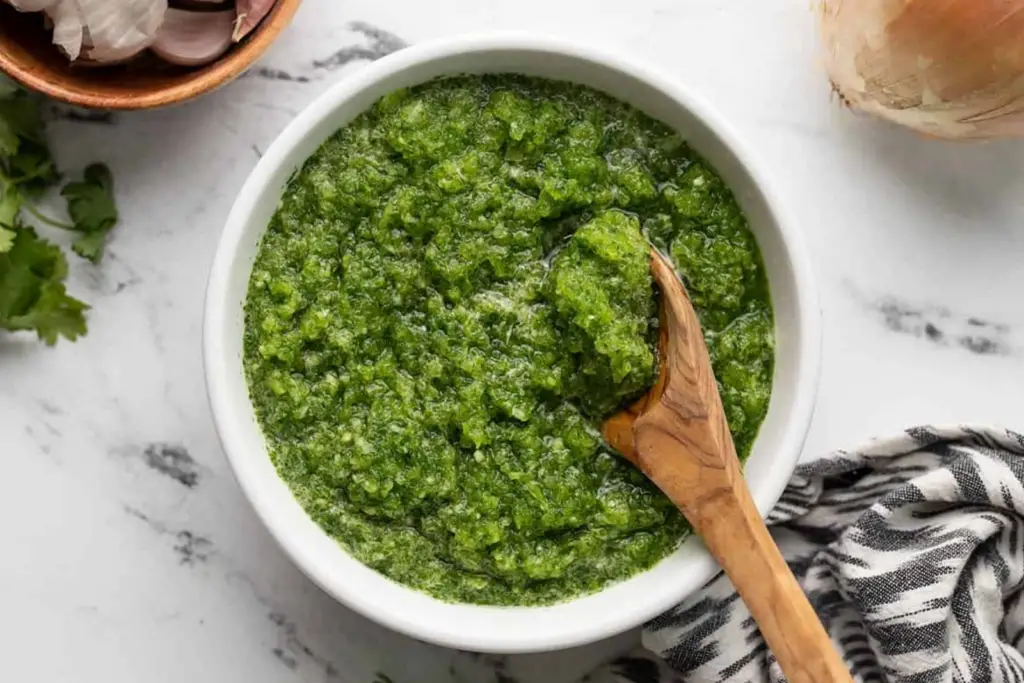
Stewed tomatoes are a delightful culinary creation, made by slow-cooking ripe tomatoes with herbs and seasonings. They offer a burst of rich, savory flavor that can enhance a wide range of dishes. Whether you’ve prepared a large batch of stewed tomatoes or have some leftovers you’d like to preserve, freezing is an excellent method to keep their delightful taste intact for future enjoyment. Freezing stewed tomatoes is a simple process that requires only a few steps to maintain their texture and flavor. In this article, we’ll provide you with a comprehensive guide on freezing stewed tomatoes to ensure they remain delicious for when you’re ready to savor them.
Here’s a guide on how to freeze stewed tomatoes:
Step 1: Cool the stewed tomatoes
Allowing the stewed tomatoes to cool completely before freezing is an important step to ensure the quality and safety of the frozen product. When hot or warm food is placed directly into the freezer, it can cause several issues due to the extreme temperature difference and the potential for uneven cooling.
- Uneven freezing: If hot or warm stewed tomatoes are placed in the freezer, the outer layers of the container may freeze quickly, forming ice crystals on the surface. However, the center of the tomatoes may take longer to cool down, leading to uneven freezing. This can result in a less-than-ideal texture and potentially affect the overall taste when thawed and reheated.
- Formation of ice crystals: When hot or warm food is frozen, the moisture present in the food can evaporate and condense on the inside of the freezer’s walls. This condensation can later freeze, forming large ice crystals. These ice crystals can cause freezer burn, which is the drying out and deterioration of the food’s quality over time. Freezer burn affects both the texture and taste of the food, making it less enjoyable when consumed.
- Bacterial growth: Placing hot food directly in the freezer can lead to a longer time for the food to cool down to a safe temperature. In the time it takes for the food to cool, it remains in the “danger zone,” which is the temperature range where bacteria can grow most rapidly (between 40°F and 140°F or 4°C and 60°C). This extended time in the danger zone increases the risk of bacterial growth and potential foodborne illnesses.
Step 2: Choose the right containers
Choosing the right containers for freezing stewed tomatoes is crucial to preserve their quality and prevent potential freezer-related issues. Different types of containers offer distinct benefits, and the proper selection ensures that the stewed tomatoes remain fresh and flavorful throughout the freezing process. Here’s an explanation of why it’s important to choose the appropriate containers:
- Airtight and Freezer-Safe: Regardless of the container type, it’s essential to ensure they are airtight and designed for freezer use. Airtight containers prevent air from entering, reducing the risk of freezer burn and maintaining the flavor and texture of the stewed tomatoes. Freezer-safe containers are specifically designed to withstand low temperatures without cracking or becoming brittle.
- Plastic Containers: Airtight freezer-safe plastic containers are a popular choice for freezing stewed tomatoes due to their convenience and durability. They come in various sizes, making it easy to portion the stewed tomatoes according to your needs. Moreover, they are lightweight and less likely to break if accidentally dropped, making handling and storage hassle-free.
- Glass Jars: Glass jars with tight-fitting lids are another excellent option for freezing stewed tomatoes. They are non-reactive, ensuring that the flavors and acidity of the tomatoes won’t be affected. Glass also provides excellent visibility, allowing you to see the contents without opening the container. However, it’s crucial to leave some headspace in glass jars to allow for expansion during freezing and prevent the jar from cracking.
- Freezer Bags: Freezer bags are a space-efficient choice for freezing stewed tomatoes, as they can be laid flat when filled, optimizing freezer space. They are also flexible, allowing you to remove excess air before sealing, which further reduces the risk of freezer burn. However, care should be taken to ensure a proper seal to prevent leaks or contamination.
- Room for Expansion: Stewed tomatoes contain water, and when frozen, the water expands into ice. Without leaving some room for this expansion, the containers may crack or burst, leading to potential food wastage and a messy freezer. Leaving about half an inch of space at the top of the containers or bags provides adequate room for the tomatoes to expand without causing any issues.
- Cleanliness: Regardless of the container type you choose, it’s essential to clean and sanitize them thoroughly before filling them with stewed tomatoes. This ensures that no contaminants or bacteria are introduced to the food during the freezing process.
Step 3: Portion and fill the containers
Portioning and filling the containers appropriately when freezing stewed tomatoes is essential for practicality, convenience, and optimal preservation. This step ensures that you have the right amount of stewed tomatoes readily available when needed, reduces the risk of food waste, and prevents potential issues during the freezing process. Let’s explore the reasons behind this step:
- Thawing Convenience: By dividing the stewed tomatoes into small portions based on your typical usage, you can easily thaw only the amount you need for a specific recipe or meal. This prevents you from thawing a large batch when you only require a small quantity, allowing you to use the stewed tomatoes more efficiently and avoiding unnecessary leftovers.
- Prevention of Food Waste: Portioning the stewed tomatoes based on your needs helps prevent food waste. If you freeze a large batch in a single container and cannot consume it all at once, the excess portion may go unused and eventually be discarded. With portioned containers, you have better control over how much you thaw and use, reducing the likelihood of food wastage.
- Optimal Freezing: Filling each container with the appropriate amount of stewed tomatoes and leaving about half an inch of space at the top allows for proper freezing. As mentioned earlier, water in the stewed tomatoes will expand as it turns into ice. By leaving some space for expansion, you avoid the risk of the containers cracking or bursting during freezing.
- Faster Freezing: Smaller portions of stewed tomatoes freeze faster than a large batch. Rapid freezing helps maintain the quality of the tomatoes by forming smaller ice crystals, which are less likely to damage the cell structure of the food. This preserves the taste, texture, and nutrients of the stewed tomatoes, providing a better overall frozen product.
- Easy Meal Planning: Portioned containers enable easy meal planning and preparation. When you know how much stewed tomatoes are in each container, you can easily incorporate them into your recipes without any guesswork. It streamlines the cooking process and ensures you have enough stewed tomatoes for your desired dishes.
- Versatility: Having stewed tomatoes portioned in smaller containers allows you to use them in various recipes, from soups and stews to sauces and casseroles. The flexibility of using just the right amount for each recipe enhances the overall culinary experience.
Are there any alternative methods to freeze stewed tomatoes?
Apart from using containers or freezer bags, you can freeze stewed tomatoes in ice cube trays for smaller portions. Once frozen, transfer the tomato cubes to a labeled freezer-safe bag. This method is great for recipes that require smaller quantities of stewed tomatoes, offering easy portioning and usage.
Can I freeze stewed tomatoes in glass jars?
Yes, you can freeze stewed tomatoes in glass jars, but it’s important to take precautions to avoid breakage. Leave sufficient headspace (about an inch) to allow for expansion during freezing, and ensure the jars are freezer-safe and specifically designed for freezing. Thaw the tomatoes in the refrigerator before transferring them to a pot or microwave-safe container for reheating.
Step 4: Seal the containers
Sealing the containers tightly to create an airtight seal is a critical step in the freezing process, especially when it comes to preserving the quality and flavor of stewed tomatoes. Whether you are using plastic containers or freezer bags, ensuring a proper seal offers several benefits that help maintain the freshness of the stewed tomatoes for an extended period. Let’s explore the importance of sealing the containers:
- Prevention of Freezer Burn: Freezer burn occurs when the surface of frozen food is exposed to air, causing moisture to evaporate. When the moisture is drawn to the surface and forms ice crystals, it can lead to changes in texture, color, and taste, resulting in a diminished quality of the stewed tomatoes. By creating an airtight seal, you prevent air from entering the containers, reducing the risk of freezer burn and preserving the tomatoes’ original taste and texture.
- Preservation of Flavor and Nutrients: Stewed tomatoes contain valuable nutrients and flavors that you want to retain during the freezing process. An airtight seal prevents the escape of volatile compounds responsible for the tomatoes’ aroma and taste. Additionally, it helps preserve the essential vitamins and minerals in the stewed tomatoes, ensuring they remain nutritious when thawed and consumed.
- Extended Storage Life: A proper seal helps extend the storage life of the stewed tomatoes in the freezer. When the containers are securely closed, the chances of spoilage due to exposure to air are significantly reduced. As a result, you can enjoy the stewed tomatoes’ freshness and quality even after several months of freezing.
- Organized and Tidy Freezer: Well-sealed containers prevent any leakage or spills that might occur during the freezing process. An organized freezer with securely sealed containers makes it easier to access the stewed tomatoes and other frozen items without any mess or inconvenience.
- Easy Stackability: Airtight containers and freezer bags with excess air pressed out can be neatly stacked in the freezer, optimizing the use of available space. This efficient storage method allows you to make the most of your freezer’s capacity and facilitates easy organization of your frozen food items.
- Safe from Contamination: An airtight seal not only protects the stewed tomatoes from the freezer’s cold air but also safeguards them from potential contamination. It prevents any odors or flavors from other foods in the freezer from seeping into the stewed tomatoes, ensuring they retain their original taste and quality.
Step 5: Label the containers
Labeling the containers with the date of freezing and the contents is a crucial organizational step when freezing stewed tomatoes, as it offers several practical advantages that contribute to maintaining the quality of the frozen food and optimizing its usage. Here’s why labeling is important:
- Easy Identification: When you freeze stewed tomatoes, they may look similar to other frozen items in the freezer. By labeling each container with the date of freezing and the contents, you can easily identify the stewed tomatoes without having to open every container. This saves time and effort when you’re looking for specific ingredients to use in your recipes.
- Rotating Frozen Items: Keeping track of the freezing date allows you to practice a “first in, first out” approach when using frozen items. By consuming the oldest frozen stewed tomatoes first, you ensure that nothing gets forgotten or left unused for an extended period, reducing the risk of food waste.
- Quality Control: While frozen foods, including stewed tomatoes, are generally safe to eat indefinitely when stored at 0°F (-18°C) or below, their quality starts to deteriorate over time. By labeling the containers, you can monitor how long the stewed tomatoes have been frozen and aim to consume them within the recommended time frame for the best taste and texture.
- Timely Usage: Stewed tomatoes are at their best quality within a few months of freezing. After that, they might experience some loss in flavor, texture, and nutritional value. Labeling the containers ensures that you’re aware of the freezing date and can use the stewed tomatoes within the optimal time frame to enjoy their full flavor profile.
- Reducing Guesswork: When cooking, having labeled containers allows you to plan your meals effectively. You won’t have to guess the age of the frozen stewed tomatoes, making it easier to incorporate them into your recipes with confidence.
- Avoiding Mistakes: Without labels, there’s a chance of confusing stewed tomatoes with other frozen ingredients, potentially leading to unintentional flavor combinations or using the wrong ingredient in a recipe. Proper labeling eliminates these risks, ensuring your dishes turn out as intended.
Step 6: Freeze the stewed tomatoes
Freezing the stewed tomatoes properly is essential to ensure they retain their quality and flavor during storage. The way you arrange the sealed containers in the freezer can significantly impact the freezing process and the overall condition of the stewed tomatoes. Here’s why it’s important to place the containers in a single layer and avoid stacking them until they are fully frozen:
- Even Freezing: Placing the sealed containers in a single layer allows for even airflow around each container. This helps promote uniform freezing, ensuring that all parts of the stewed tomatoes freeze at the same rate. Even freezing prevents the formation of large ice crystals and minimizes the risk of freezer burn, preserving the texture and taste of the tomatoes.
- Quick Cooling: When the stewed tomatoes are placed in a single layer, they cool down more rapidly. Rapid cooling is important to maintain the quality of the tomatoes. The quicker the food freezes, the smaller the ice crystals that form, and this results in better overall preservation.
- Avoiding Temperature Fluctuations: When you stack containers immediately after placing them in the freezer, the airflow between the containers is restricted. This can lead to uneven cooling and cause temperature fluctuations within the freezer. Temperature fluctuations can affect the quality of the frozen food and may lead to thawing and refreezing, further degrading the texture and taste of the stewed tomatoes.
- Preventing Container Leakage: If containers are stacked too soon after being placed in the freezer, there’s a higher chance of the containers tipping or shifting, potentially causing leaks or spills. This not only creates a mess in the freezer but can also lead to cross-contamination of other items.
- Easy Access: Arranging containers in a single layer makes it easier to access individual portions without having to move or disturb other items in the freezer. This helps maintain the organization of the freezer and makes it more convenient to retrieve the stewed tomatoes as needed.
How long can I safely store frozen stewed tomatoes?
When stored at 0°F (-18°C) or below, frozen stewed tomatoes can remain safe to eat indefinitely. However, for the best quality, it’s recommended to use them within 6 to 12 months. Properly labeled containers can help you keep track of the freezing date and ensure timely consumption.
Step 7: Thaw and use as needed
Thawing frozen stewed tomatoes properly is essential to ensure food safety and maintain the quality of the tomatoes when you’re ready to use them. Thawing in the refrigerator is the recommended method for defrosting, as it allows for a controlled and safe thawing process. Here’s why it’s important to avoid thawing at room temperature and opt for refrigerator thawing instead:
- Food Safety: Thawing frozen food at room temperature can lead to the growth of harmful bacteria. The temperature range between 40°F and 140°F (4°C and 60°C) is known as the “danger zone,” where bacteria multiply most rapidly. When food is left in this temperature range for an extended period, it increases the risk of foodborne illnesses.
- Controlled Thawing: Thawing in the refrigerator provides a controlled environment where the temperature remains below 40°F (4°C). This slow and steady thawing process helps to keep the stewed tomatoes at a safe temperature while preventing the growth of harmful bacteria. It ensures that the tomatoes thaw evenly and retain their quality.
- Texture Preservation: Thawing stewed tomatoes slowly in the refrigerator helps preserve their texture and prevents the release of excess moisture. Rapid thawing at room temperature or using methods like microwaving can cause the tomatoes to become mushy or watery, negatively affecting their taste and consistency.
- Reduced Risk of Food Contamination: Thawing in the refrigerator also minimizes the risk of cross-contamination with other foods. As the stewed tomatoes thaw in a closed container or sealed bag, any potential drips or leaks are contained, reducing the likelihood of contaminating other items in the refrigerator.
- Convenience: While thawing in the refrigerator takes longer than room-temperature methods, it requires minimal effort. You can simply plan ahead and take out the desired portion of frozen stewed tomatoes the night before or a few hours before use, allowing them to thaw slowly and safely in the fridge.
- Cooking Control: Thawed stewed tomatoes can be easily incorporated into your recipes without the need for additional cooking time. When thawed in the refrigerator, the tomatoes retain their original flavor and texture, enhancing the overall taste of the dishes they are used in.
Can I use frozen stewed tomatoes directly in recipes without thawing?
Yes, you can use frozen stewed tomatoes directly in recipes without thawing. Adding frozen stewed tomatoes to soups, stews, or sauces during cooking is a convenient option. However, be aware that the cooking time may be slightly longer to ensure the tomatoes thaw and incorporate into the dish properly.
Other related questions
Can I refreeze stewed tomatoes?
No, it is not recommended to refreeze stewed tomatoes once they have been thawed. Refreezing can lead to a loss of quality, taste, and texture due to potential bacterial growth and degradation during repeated thawing and freezing cycles. It is best to thaw only the amount needed for use to ensure the stewed tomatoes maintain their optimal freshness.
How do I know if the stewed tomatoes have gone bad after being frozen?
To determine if frozen stewed tomatoes have gone bad, look for signs of spoilage such as an off-smell, mold growth, or a significant change in texture or color. If the tomatoes appear slimy, develop an unusual odor, or exhibit an abnormal appearance, it is best to discard them. Trust your senses and prioritize food safety when evaluating the condition of frozen stewed tomatoes.
Can I freeze stewed tomatoes with added spices and herbs?
Yes, you can freeze stewed tomatoes with added spices and herbs. However, keep in mind that the flavors may intensify during freezing, so consider adjusting the seasoning accordingly. It’s best to label the containers with the ingredients used for easy identification when thawing and using them in recipes.
Can I freeze stewed tomatoes with meat or other ingredients?
Yes, you can freeze stewed tomatoes with meat or other ingredients. However, consider that the texture of some ingredients, such as meat, may change after freezing. For best results, ensure the ingredients are cooked before freezing, and label the containers for easy identification.








